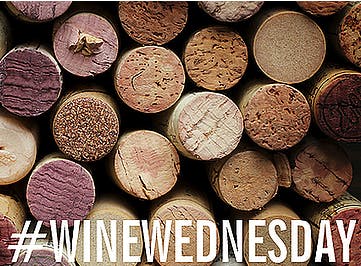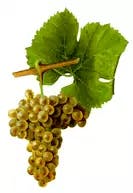Wine Wednesday: Viognier

Thinking about what I may want to drink with my ramen tonight.

Viognier is an ancient white grape of unknown origin. It is believed to have originated in what is present-day Croatia and brought to the Rhone by Romans. The vines are generally low yielding, but produce beautiful, straw-gold colored wines with potent aromatics.
The challenges of the grape are many. The powerful aromatics that distinguish the grape are easily damaged by too much oxygen exposure, therefore barrel fermentation requires a high level of skill on the part of the winemaker. In the vineyard the grapes require a long, warm growing season in order to fully ripen, but temperatures that are too hot will spike sugars before aromatics can develop.
Although once widely grown, Viognier's popularity ebbed to the point of near-extinction in 1965 when plantings dwindled to just 8 acres in the Northern Rhone. In addition to low production, the vines do not hit their peak in quality until 15 to 20 years of age.
Varietal bottlings are particularly fragrant and full-bodied white wines, and as a blending grape (often added to Syrah) lend softness and perfume. Typical qualities of the wine are stonefruit and flower aromas, tropical flavors with nice minerality. They're often dry, but may also be oaked, creamy and rich, depending on the winemaking style. In general, warmer regions tend to produce headier, low-acid wines, while cooler regions will result in bright wines with higher acidity. Dessert-style Viogniers are made from late-harvest grapes.
The lush, soft characteristics of the grape may vary based on growing conditions as well as the age of the vines. Most Viogniers are intended to be consumed young (with few exception) as aging reduces the exciting aromatics of the wine.
Viognier vines are now grown world wide, with significant plantings in France, Australia, and North America.
FLAVOR PROFILE:
Tropical fruit flavors and a rich, creamy mouthfeel and mineral character. Aromas and flavors include honey, stonefruit, orange blossoms, with a long finish.
Some Viognier Producers to try
Alban Vineyards
Anaba Wines
Cline Cellars
Kieran Robinson Wines
Mounts Family Winery
Penner Ash Wine Cellars
Qupe Wine Cellars
Stolpman Vineyards
Winery Sixteen 600
FEATURED VINEYARD
Steel Plow Vineyard, Sonoma Valley
Location:
The narrow northern end of Sonoma Valley.
The name of the estate vineyard, Steel Plow Estate Vineyard, embraces Landmark’s John Deere heritage. Founder Damaris Deere Ford was the great-great-granddaughter of John Deere, the inventor of the steel plow which revolutionized farming. With such a deep connection to excellence in agriculture, we choose to organically farm the vineyard.
This certified organic vineyard lies in the Moon Mountain District in Sonoma Valley, and is managed and farmed by Phil Coturri, who is best known for his organic farming practices. This beautiful vineyard made up of alluvial soil, igneous volcanic rock and clay.

photo: Sam Coturri
After pruning in the winter, we bring in a flock of sheep to help “mow” down the cover crop between the vine rows. They also aerate and fertilize the soil. It’s win-win!
The 11 acres of Steel Plow Vineyard are planted with Rhone varietals – Grenache, Syrah, Mourvedre, and Viognier.
They import cuttings of Rhone varietals from the well-known Chateau Beaucastel. Landmark purchased both the rootstock and budwood from Tablas Creek. At the estate, we planted the rootstock in the spring of 2007. The first vintage from Steel Plow Vineyard was 2009.
Winery that uses Viognier grapes from Steel Plow: Winery Sixteen 600
Source: Landmark Wine, CaryQ Wines
More Ink on Viognier
There's Viognier and Then There's Condrieu
Descriptive Analysis and Consumer
Study of Viognier
